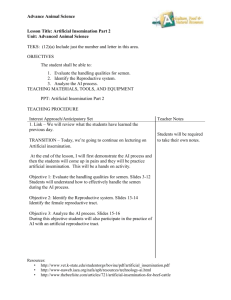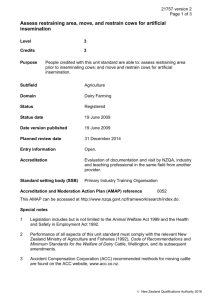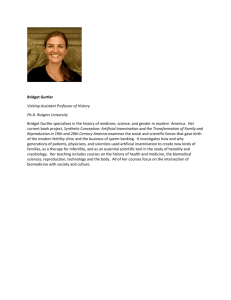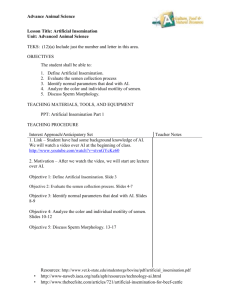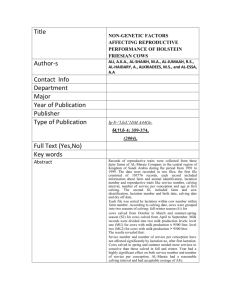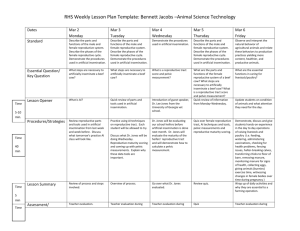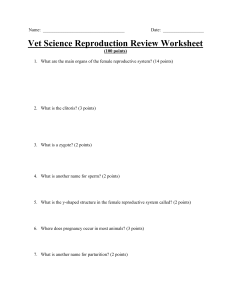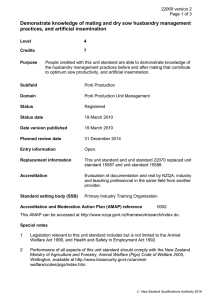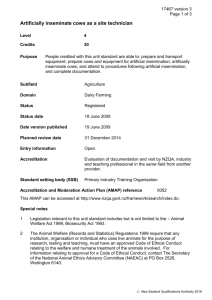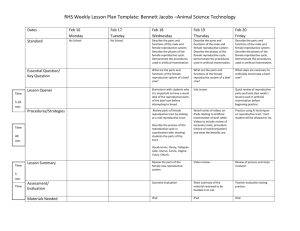25714 Demonstrate knowledge of cow reproduction and perform
advertisement
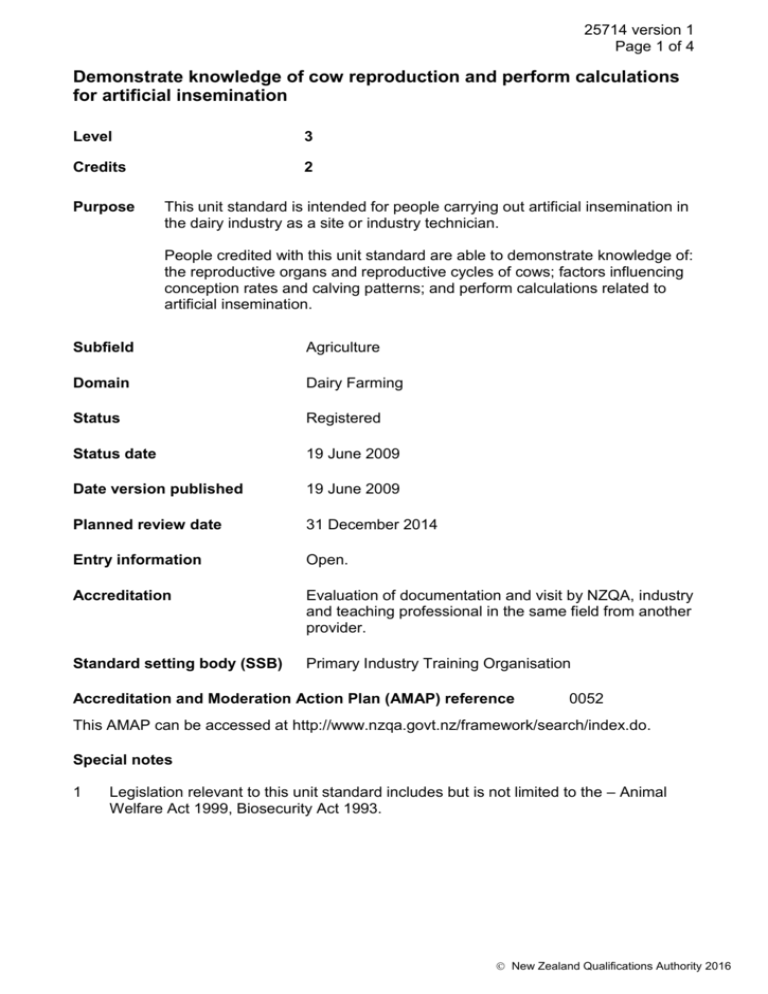
25714 version 1 Page 1 of 4 Demonstrate knowledge of cow reproduction and perform calculations for artificial insemination Level 3 Credits 2 Purpose This unit standard is intended for people carrying out artificial insemination in the dairy industry as a site or industry technician. People credited with this unit standard are able to demonstrate knowledge of: the reproductive organs and reproductive cycles of cows; factors influencing conception rates and calving patterns; and perform calculations related to artificial insemination. Subfield Agriculture Domain Dairy Farming Status Registered Status date 19 June 2009 Date version published 19 June 2009 Planned review date 31 December 2014 Entry information Open. Accreditation Evaluation of documentation and visit by NZQA, industry and teaching professional in the same field from another provider. Standard setting body (SSB) Primary Industry Training Organisation Accreditation and Moderation Action Plan (AMAP) reference 0052 This AMAP can be accessed at http://www.nzqa.govt.nz/framework/search/index.do. Special notes 1 Legislation relevant to this unit standard includes but is not limited to the – Animal Welfare Act 1999, Biosecurity Act 1993. New Zealand Qualifications Authority 2016 25714 version 1 Page 2 of 4 2 The Animal Welfare (Records and Statistics) Regulations 1999 require that any institution, organisation or individual who uses live animals for the purpose of research, testing and teaching, must have an approved Code of Ethical Conduct relating to the welfare and humane treatment of the animals involved. For information relating to approval for a Code of Ethical Conduct, contact The Secretary of the National Animal Ethics Advisory Committee (NAEAC) at PO Box 2526, Wellington 6140. 3 This is one of three unit standards that recognise the knowledge of cattle reproduction. This standard is intended for artificial insemination technicians. The other standards, Unit 19086, Demonstrate knowledge of cattle reproductive organs, cycles, and processes and Unit 19085, Demonstrate knowledge of cattle mating management are intended for those working in cattle farming enterprises. People who require more than one of these unit standards can use evidence for this unit standard for assessment against the other standards. 4 Definitions Non-return rate is the district average 18-24 day non-return rate based on a minimum of 50 herds in the same broad geographic area and timeframe. Organisational standards and procedures refer to the documented training policies and procedures for animal handling and insemination, which must be approved by an approved Animal Ethics Advisory Committee (AEAC). Elements and performance criteria Element 1 Demonstrate knowledge of the reproductive organs and reproductive cycles of cows. Performance criteria 1.1 Reproductive organs of cows are described in terms of their structure and function. Range 1.2 reproductive organs – ovaries, oviduct (fallopian tubes), uterus, cervix, vagina, vulva. Stages of the reproductive cycle are described in terms of their sequence, length of time, and seasonal occurrence. Range ovulation, oestrus, mating, conception, anoestrus. New Zealand Qualifications Authority 2016 25714 version 1 Page 3 of 4 Element 2 Demonstrate knowledge of factors influencing conception rates and calving patterns. Performance criteria 2.1 Mating programmes for cows are described in terms of technologies available to condense calving patterns. Range may include but not limited to – controlled internal drug release (CIDR), prostaglandin, synchronisation, induction. 2.2 Types of abnormality which disrupt mating of cows are identified in terms of their effect on reproductive organs. 2.3 Optimum conception rates of cows are described in terms of the influencing factors. Range includes but is not limited to – semen fertility, animal health, feeding, animal condition, submission rates, errors in heat detection. Element 3 Perform calculations related to artificial insemination. Performance criteria 3.1 Submission rates for a herd of cows are calculated in accordance with organisational standards and procedures. 3.2 18-24 day non-return rates for an artificial breeding technician are calculated in accordance with organisational standards and procedures. 3.3 Expected calving dates from mating dates are calculated in accordance with organisational standards and procedures. Please note Providers must be accredited by NZQA, or an inter-institutional body with delegated authority for quality assurance, before they can report credits from assessment against unit standards or deliver courses of study leading to that assessment. Industry Training Organisations must be accredited by NZQA before they can register credits from assessment against unit standards. Accredited providers and Industry Training Organisations assessing against unit standards must engage with the moderation system that applies to those standards. New Zealand Qualifications Authority 2016 25714 version 1 Page 4 of 4 Accreditation requirements and an outline of the moderation system that applies to this standard are outlined in the Accreditation and Moderation Action Plan (AMAP). The AMAP also includes useful information about special requirements for organisations wishing to develop education and training programmes, such as minimum qualifications for tutors and assessors, and special resource requirements. Comments on this unit standard Please contact the Primary Industry Training Organisation standards@primaryito.ac.nz if you wish to suggest changes to the content of this unit standard. New Zealand Qualifications Authority 2016
